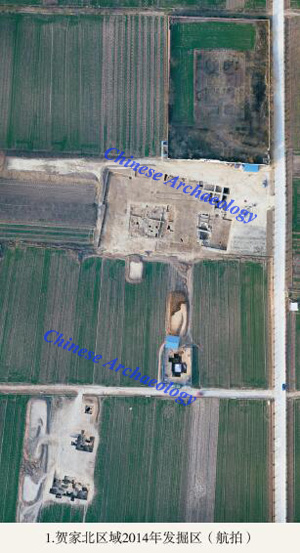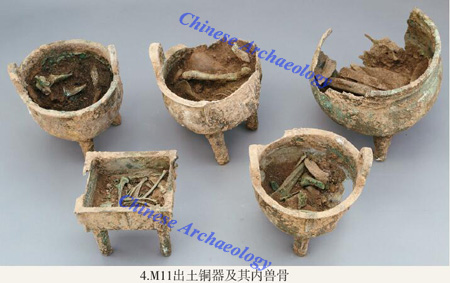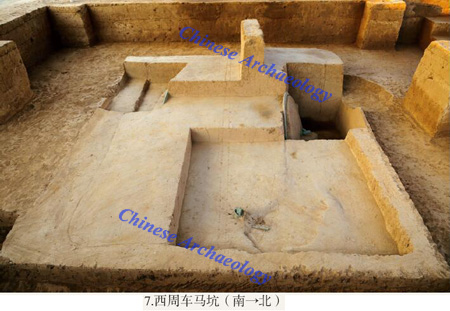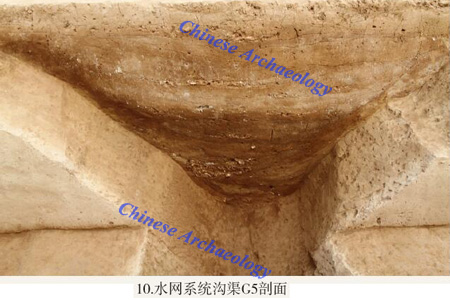Newly discovered Zhou Dynasty ruins in Shaanxi Province
From:Chinese Archaeology NetWriter:Date:2016-01-22
An archaeological team consisting of members from the Shaanxi Provincial Institute of Archaeology, Chinese Academy of Social Science’s Institute of Archaeology, and Peking University started a new round of excavations at the Zhouyuan site in September 2014. This installment of archaeological work had two directions, based on an understanding of the settlement ruins as a capital; first, a focus on the northern Hejia area and by the Fengchu building complex centered, to expose as much of the above-mentioned area as possible; and second, the settlement’s water network system and city walls, to understand the layout and function of those areas. Based on the above work, locations of city walls, buildings, handicraft workshops, cemeteries, and such were established; important traces of organic links among these things were also established; and new archaeological excavation methods were explored at the site.

Aerial photo of northern part of Hejia area execavated in 2014

Western Zhou period tomb M11

Bronze wares unearthed from tomb M11

Bronze wares and animal bones inside unearthed from tomb M11

Chariot-horse pit of Western Zhou period
A pit with chariot and horses from the middle-late Western Zhou period was discovered at the south side of building group number three. The pit was 4.3 meters north to south and 3.2 meters east to west and contained one chariot , presumably drawn by four horses. After partial excavation [of the pit] a bronze cog was uncovered, consisting of four sections, diameter approximately 1.6 meters. The chariot’s endpiece of axle, linchpin and yoke were decorated with inlaid turquoise, previously a decoration rarely seen. Due to the need to protect cultural relics, the entire contents of the chariot pit were packed up and returned to the laboratory for cleanup.
Cross section of ditch G5 of the water network system

Pottery sherds unearthed from the water network system
A water network system was found including one silt-soil remains and 11 ditches was newly discovered. The silt-soil and 4 ditches were explored to further knowledge of the water network. The silt remains was located in the northwestern part of the site’s core area, at the front edge of a hill slope, covering approximately 660,000 square meters. Its age range was no earlier than the Western Zhou Dynasty and no later than the Western Han Dynasty. Ditch G6, located at the most northern part of the water network system, might be connected with the silt along the eastern edge of the northern part. It extends eastward approximately 1900 meters at present time. The ditch breaks the stratum of late Western Zhou, dating it to the late Western Zhou period.
The graves in the northern part of the Hejia area included many cultural elements from the Shang Dynasty and may be part of a Shang-era commoner cemetery. The 回(hui) shaped layout of building group number three was first discovered to be from the Western Zhou period, enriching the connotation of the Fengchu building complex. Remains from these two locations, the pit with the chariot and horses, and the previously discoveries of the Fengchu building complex and a cellar storage in Dongjia site, all bring us further understanding of the characteristics and essential properties of this region, thereby promoting contemplation of the settlement’s layout and the functional subdivision of the Zhouyuan site.
The discovery and confirmation of the water network system at the Zhouyuan site further strengthen the organic connections between many previously discovered remains and deepen our understanding of the relationship between settlement expansion and water supply in the settlement of Zhouyuan. It also contributes to advances in new ideas about the characteristics of some important remains in the perspective of the whole layout. Together with the remains such as Kunming Pond at the Fenghao site, this discovery fills a gap in our knowledge of water network systems in capital ruins of the Zhou period. (Translator: Grace Warren)

